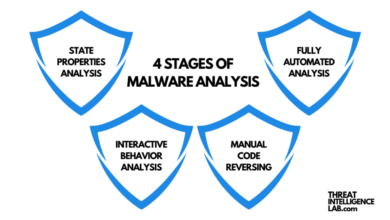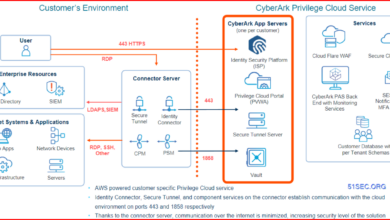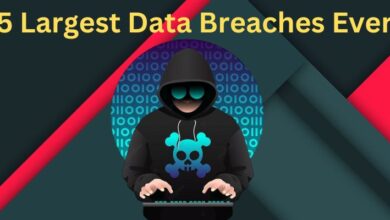
Dole Suffers a Ransomware Attack
Dole suffers a ransomware attack – a headline that sent shockwaves through the food industry and beyond. This wasn’t just another data breach; it highlighted the vulnerability of even the biggest players to sophisticated cybercrime. We’ll delve into the impact, the methods used, and the lessons learned from this significant event, exploring the ripple effects across Dole’s operations and the wider implications for food security and cybersecurity practices.
The attack on Dole wasn’t just about stolen data; it exposed weaknesses in the company’s security infrastructure and raised concerns about the potential for widespread disruption in the global food supply chain. This incident serves as a stark reminder that no organization, regardless of size or reputation, is immune to the growing threat of ransomware. We’ll examine the specifics of the Dole attack, analyze the vulnerabilities exploited, and discuss the crucial steps businesses must take to bolster their defenses against similar threats.
Impact Assessment of the Dole Ransomware Attack

The Dole ransomware attack, while the specifics remain largely undisclosed, serves as a stark reminder of the vulnerability of even the largest corporations to cybercrime. The incident highlights the multifaceted impact of such attacks, extending far beyond the immediate financial costs. Understanding the full extent of the damage requires examining the financial losses, operational disruptions, and reputational harm suffered.
Financial Losses
Estimating the precise financial losses incurred by Dole is challenging due to the lack of public disclosure. However, the costs are likely substantial. These losses include the direct ransom payment (if one was made – which Dole has not confirmed), the costs associated with incident response (hiring cybersecurity experts, forensic investigations, legal fees), system restoration, data recovery, and potential business interruption insurance premiums.
The disruption to production and distribution would have resulted in lost revenue, impacting profitability for an extended period. Consider a comparable attack on a major food processing company, where the cost of downtime, data recovery, and legal fees could easily run into the tens or even hundreds of millions of dollars. The long-term impact on investor confidence and stock prices should also be considered as a significant financial consequence.
Disruption to Operations and Supply Chains
A ransomware attack on a global food producer like Dole would inevitably cause significant disruption to its operations and supply chains. The attack likely compromised critical systems managing production, logistics, and distribution. This could lead to delays in processing, shipping, and delivering products to retailers and consumers. Imagine the scenario: processing plants temporarily shut down, delivery trucks unable to access shipment information, and supermarket shelves left empty due to supply chain bottlenecks.
The ripple effect on the entire food industry, dependent on Dole’s products, could be substantial, resulting in shortages, price increases, and potential food safety concerns. The restoration of these systems and the rebuilding of trust within the supply chain would take considerable time and resources.
Reputational Damage
Beyond the immediate financial and operational consequences, the Dole ransomware attack has the potential to inflict significant reputational damage. News of a major data breach can erode consumer trust and damage the company’s brand image. Consumers might question the safety and security of Dole’s products and operations, leading to decreased sales and market share. Furthermore, the attack could impact Dole’s relationships with suppliers, retailers, and investors.
The incident could attract negative media attention, potentially leading to legal action from affected parties or regulatory investigations. A successful recovery and transparent communication are crucial to mitigating this reputational risk, but the long-term effects can be hard to fully assess.
Hypothetical Timeline of the Attack and Aftermath
| Stage | Timeline (Hypothetical) | Impact | Response |
|---|---|---|---|
| Initial Compromise | Day 1-3: Malicious software gains access to Dole’s systems. | Data encryption begins, initial system disruption. | Security systems (if any) detect anomaly, initial investigation begins. |
| Attack Escalation | Day 3-7: Ransomware spreads, affecting critical systems. | Significant operational disruption, data loss. | Emergency response team activated, containment efforts. |
| Ransom Demand | Day 7-10: Ransom demand received. | Decision on whether to pay ransom. | Negotiations (potentially), legal counsel consulted. |
| Recovery and Remediation | Day 10-30+: System restoration, data recovery, investigation continues. | Partial or full restoration of operations, ongoing costs. | System upgrades, security enhancements, communication with stakeholders. |
| Long-term Impact | Months to Years: Reputational recovery, legal ramifications. | Potential financial losses, ongoing security investments. | Improved security posture, enhanced communication strategies. |
Immediate and Long-Term Effects
| Effect | Immediate (Short-Term) | Long-Term |
|---|---|---|
| Financial | Lost revenue, ransom payment (potential), incident response costs. | Reduced profitability, potential legal settlements, increased insurance premiums. |
| Operational | Production delays, supply chain disruptions, system downtime. | Rebuilding trust within the supply chain, enhanced security measures. |
| Reputational | Negative media coverage, customer concerns, loss of consumer trust. | Damage to brand image, potential loss of market share, difficulty attracting investors. |
| Legal | Potential regulatory investigations, lawsuits from affected parties. | Potential fines and penalties, long-term legal battles. |
Security Breaches and Vulnerabilities Exploited

The Dole ransomware attack, while details remain scarce due to the company’s limited public disclosures, likely involved a combination of sophisticated techniques and exploited vulnerabilities within their IT infrastructure. Understanding these weaknesses is crucial for preventing similar incidents in other organizations. The attackers likely leveraged a multi-stage approach, exploiting initial entry points to gain progressively higher levels of access until they achieved control over critical systems and data.
Analyzing potential attack vectors reveals several likely scenarios. The attackers might have used a combination of social engineering and technical exploits to breach Dole’s defenses. Given the prevalence of phishing attacks targeting businesses, it’s highly probable that compromised employee credentials played a significant role. Additionally, outdated software or unpatched systems present readily available entry points for malicious actors.
Potential Entry Points and Exploited Vulnerabilities
The attackers likely exploited several vulnerabilities to gain access to Dole’s systems. A comprehensive understanding of these vulnerabilities is essential for developing robust preventative measures.
It’s plausible that the attackers leveraged common attack vectors such as phishing emails containing malicious attachments or links. These emails might have been carefully crafted to appear legitimate, tricking employees into revealing credentials or downloading malware. Another possibility is the exploitation of known vulnerabilities in outdated software, such as unpatched operating systems, applications, or network devices. These vulnerabilities could have allowed attackers to gain initial access and then move laterally within the network.
Lack of Security Protocols
Several security protocols might have been lacking or insufficiently implemented within Dole’s IT infrastructure, contributing to the success of the ransomware attack.
A robust multi-factor authentication (MFA) system, for example, could have significantly hindered the attackers’ ability to gain access using compromised credentials. Regular security audits and penetration testing are crucial for identifying and mitigating vulnerabilities before they can be exploited. Furthermore, a comprehensive data backup and recovery strategy, including air-gapped backups, is essential to minimize the impact of a ransomware attack.
The lack of any of these measures could have significantly contributed to the severity of the Dole incident.
Gaining Administrative Access
Once initial access was gained, the attackers likely employed several techniques to escalate their privileges and gain administrative access to Dole’s network.
This could have involved exploiting vulnerabilities in network devices, such as routers or firewalls, to gain control over network traffic. The attackers might have also used compromised credentials to access privileged accounts or leveraged known vulnerabilities in applications to gain administrative access to specific systems. Lateral movement within the network, using techniques like pass-the-hash or exploiting misconfigurations, would have allowed the attackers to spread their infection and ultimately gain control of critical systems and data.
Categorized List of Identified Vulnerabilities
The following list categorizes the potential vulnerabilities exploited in the Dole ransomware attack. This is not an exhaustive list, and the specifics are unknown without a full investigation report from Dole.
- Social Engineering: Phishing emails targeting employees with malicious attachments or links.
- Software Vulnerabilities: Outdated or unpatched operating systems, applications, and network devices.
- Network Vulnerabilities: Exploiting weaknesses in routers, firewalls, or other network infrastructure components.
- Credential Theft: Compromised employee credentials used to gain initial access.
- Lack of Multi-Factor Authentication (MFA): Insufficient protection against credential theft.
- Insufficient Security Audits and Penetration Testing: Failure to proactively identify and mitigate vulnerabilities.
- Inadequate Data Backup and Recovery: Lack of a robust and secure backup and recovery strategy.
Data Exfiltration and Ransomware Demands
The Dole ransomware attack, while details remain scarce due to the company’s understandably tight-lipped approach, likely involved the theft of sensitive data and subsequent ransom demands. Understanding the nature of the stolen information and the attackers’ tactics is crucial for assessing the attack’s overall impact and for informing future cybersecurity strategies within the food industry.The attackers likely employed sophisticated methods to achieve data exfiltration and leverage their ill-gotten gains.
This section will explore the types of data potentially stolen, the likely exfiltration methods, the ransom demands, and a comparison with similar attacks in the food sector.
Types of Stolen Data
Given Dole’s operations, the stolen data likely included a mix of sensitive information. This could range from employee personal data (names, addresses, social security numbers, etc.) and financial records (payroll information, bank details) to operational data encompassing supply chain information, production details, customer lists, and potentially even proprietary formulas or intellectual property. The value of this data to the attackers would vary, with some elements being immediately monetizable on the dark web (e.g., personal information) while others could be used for long-term espionage or competitive advantage.
Data Exfiltration Methods
Attackers typically employ various methods for data exfiltration. In the Dole case, they likely used techniques to bypass security measures. This could involve exploiting known vulnerabilities in Dole’s systems (e.g., outdated software, weak passwords), using phishing emails to gain initial access, or leveraging compromised credentials. Once inside the network, they likely used techniques such as data compression and encryption to facilitate the transfer of large amounts of data across the network undetected, possibly employing command and control servers located overseas.
The exfiltrated data might have been transferred via encrypted channels or through seemingly legitimate traffic to avoid detection by security systems.
Ransom Demands
The exact ransom amount demanded by the attackers in the Dole case is not publicly known. However, ransomware attacks often involve demands ranging from tens of thousands to millions of dollars, depending on the size and sensitivity of the stolen data and the attacker’s assessment of the victim’s willingness to pay. The payment is typically requested in untraceable cryptocurrencies like Bitcoin.
Comparison with Similar Attacks
Several ransomware attacks have targeted the food industry in recent years, often with significant financial and reputational consequences. These attacks frequently involve demands for large sums of money in exchange for the decryption key and a promise (often unfulfilled) not to release the stolen data publicly. The demands are usually tailored to the perceived financial capabilities of the victim, with larger companies often facing higher ransom demands.
For instance, the JBS Foods attack in 2021 resulted in a multi-million dollar payout. While the specifics of Dole’s case remain undisclosed, the pattern of large ransom demands in similar attacks suggests a comparable figure is likely.
Data Exfiltration Process Illustration, Dole suffers a ransomware attack
Imagine a diagram showing Dole’s network as a central node. Branching out from this are several smaller nodes representing various servers and databases containing sensitive data. Arrows depicting encrypted data streams are shown flowing from these nodes to a single external node labeled “Attacker’s Command and Control Server,” located outside Dole’s network. These arrows are thicker in some places, indicating varying data transfer speeds.
A smaller arrow, depicting a return pathway, flows back to the Dole network, representing the attacker’s demand for ransom payment in cryptocurrency. The diagram visually represents the movement of data from Dole’s systems to the attacker’s control, highlighting the clandestine nature of the process.
Dole’s Response and Recovery Efforts: Dole Suffers A Ransomware Attack
The Dole ransomware attack, while devastating, spurred a significant and multifaceted response aimed at containing the damage, restoring systems, and addressing legal and regulatory ramifications. Their actions highlight the complexities involved in recovering from such a significant cybersecurity incident. The company’s response involved a coordinated effort across various departments, emphasizing swift action and transparency.
Dole’s initial response focused on immediate containment of the attack. This involved isolating affected systems from the network to prevent further spread of the ransomware. Simultaneously, they engaged a team of cybersecurity experts to analyze the attack, identify the source, and understand the extent of data compromise. This included forensic analysis of infected systems and logs to trace the attack’s path and identify vulnerabilities exploited.
They also implemented enhanced security measures, including patching known vulnerabilities and strengthening network defenses to prevent future attacks. A critical aspect of their containment strategy involved working closely with law enforcement agencies to gather evidence and potentially track down the perpetrators.
Containment and Mitigation
Dole’s rapid response involved immediate system isolation, engaging cybersecurity experts, and implementing enhanced security protocols. This included patching vulnerabilities, strengthening network defenses, and forensic analysis to understand the attack’s scope and origin. Collaboration with law enforcement was crucial in evidence gathering and potential perpetrator identification. The speed and decisiveness of their actions were key to limiting the long-term damage.
Communication Strategy
Dole’s communication strategy prioritized transparency and timely updates to stakeholders. They issued official statements acknowledging the incident, outlining the steps taken to address it, and providing updates on the recovery process. This involved communicating with employees, customers, business partners, and regulatory bodies. The approach focused on honesty and open communication to build trust and manage expectations. Regular updates kept stakeholders informed, mitigating potential negative publicity and maintaining confidence in Dole’s commitment to security.
The clear and consistent messaging helped to manage the crisis effectively.
Data Recovery and System Restoration
Data recovery and system restoration were complex and time-consuming processes. Dole likely employed a multi-pronged approach, including restoring data from backups, utilizing data recovery tools, and potentially negotiating with the attackers (though this is often not recommended due to ethical and legal considerations). System restoration involved reinstalling software, configuring systems, and rigorous testing to ensure stability and security. The process required significant technical expertise and likely involved extensive collaboration between internal IT teams and external cybersecurity specialists.
The recovery effort highlighted the importance of robust backup and recovery procedures.
Legal and Regulatory Implications
The ransomware attack triggered several legal and regulatory implications for Dole. They were obligated to comply with data breach notification laws, informing affected individuals and regulatory bodies about the incident and the compromised data. This involved adhering to specific timelines and providing detailed information about the breach, the types of data affected, and the steps taken to mitigate the damage.
Furthermore, they faced potential legal action from affected parties, including customers and business partners, and investigations by regulatory authorities. Compliance with relevant regulations, such as GDPR (if applicable), was paramount in mitigating legal risks. This situation underscores the significant legal and financial liabilities associated with ransomware attacks.
Dole’s Incident Response Plan Flowchart
The following describes a hypothetical flowchart representing a possible incident response plan. It is not based on Dole’s specific internal plan, but rather a general representation of best practices.
The flowchart would begin with a “Detection” box, branching to “Incident Confirmation” and then to “Containment.” From Containment, there would be branches to “Eradication,” “Recovery,” and “Post-Incident Activity.” Each of these would have sub-branches illustrating specific actions. For example, “Containment” might branch to “Isolate Affected Systems,” “Network Segmentation,” and “Disable External Access.” “Recovery” might branch to “Data Restoration,” “System Restoration,” and “Security Hardening.” “Post-Incident Activity” would branch to “Lessons Learned,” “Communication,” and “Legal and Regulatory Compliance.”
Lessons Learned and Future Prevention Strategies

The Dole ransomware attack serves as a stark reminder of the ever-evolving threat landscape facing even the largest organizations. While the specifics of the attack remain partially undisclosed, analyzing publicly available information allows us to draw crucial lessons and Artikel preventative measures for similar situations. Understanding the vulnerabilities exploited and the subsequent impact highlights the need for a proactive and multi-layered security approach.
Key Lessons Learned from the Dole Ransomware Attack
The Dole incident underscores several critical lessons. Firstly, sophisticated ransomware actors are actively targeting critical infrastructure and large corporations, demonstrating the potential for widespread disruption and financial loss. Secondly, even organizations with established security measures can be vulnerable if those measures are not regularly updated and tested. Thirdly, the speed and efficiency of data exfiltration highlight the need for robust data loss prevention (DLP) strategies.
Finally, the incident emphasizes the importance of a well-rehearsed incident response plan, capable of minimizing the impact and facilitating a swift recovery. A lack of preparedness can significantly extend the recovery time and amplify the overall damage.
Preventative Measures to Improve Dole’s Security
Implementing a comprehensive security strategy requires a multi-pronged approach. Dole should prioritize strengthening its network security by implementing advanced threat detection systems, including intrusion detection and prevention systems (IDPS). Regular security audits and penetration testing are essential to identify vulnerabilities before malicious actors can exploit them. Investing in robust endpoint detection and response (EDR) solutions will provide real-time visibility into endpoint activity and enable faster incident response.
The Dole ransomware attack highlights the vulnerability of even large corporations to cyber threats. Building robust, secure systems is crucial, and that’s where understanding the future of app development comes in. Check out this insightful article on domino app dev the low code and pro code future to see how modern approaches can improve security and resilience against attacks like the one Dole experienced.
Ultimately, preventing future incidents requires a proactive approach to IT infrastructure.
Furthermore, multi-factor authentication (MFA) should be mandatory for all users and access controls rigorously enforced. Finally, data encryption both at rest and in transit is paramount to minimize the impact of a successful ransomware attack.
The Importance of Employee Cybersecurity Awareness Training
Human error remains a significant factor in many cyberattacks. Comprehensive and regular employee training is crucial. This training should cover topics such as phishing awareness, safe browsing practices, password management, and recognizing and reporting suspicious activity. Simulations and phishing exercises can effectively reinforce these lessons and help employees develop a heightened sense of security awareness. Regular refresher courses are vital to maintain knowledge and adapt to evolving threats.
This proactive approach significantly reduces the likelihood of employees falling victim to social engineering tactics, a common entry point for ransomware attacks.
The Role of Regular Security Audits and Vulnerability Assessments
Regular security audits and vulnerability assessments are not merely compliance exercises; they are proactive measures that identify weaknesses in an organization’s security posture. These assessments should be conducted by qualified security professionals and cover all aspects of the IT infrastructure, including network devices, servers, applications, and endpoints. The findings should be thoroughly analyzed, prioritized, and addressed in a timely manner.
The Dole ransomware attack highlights the urgent need for robust cybersecurity, especially as more companies move to the cloud. Understanding how to effectively manage this shift is crucial, and that’s where solutions like those discussed in this article on bitglass and the rise of cloud security posture management become incredibly important. The Dole incident serves as a stark reminder of the devastating consequences of inadequate cloud security.
This continuous monitoring and improvement process is crucial for maintaining a robust security posture and mitigating the risk of ransomware attacks. Regular patching of software vulnerabilities and timely updates of security software are also essential components of this process.
Best Practices for Ransomware Prevention and Response
| Prevention | Response |
|---|---|
| Regular software patching and updates | Activate incident response plan immediately |
| Multi-factor authentication (MFA) for all users | Isolate affected systems to prevent further spread |
| Robust endpoint detection and response (EDR) | Conduct a thorough forensic investigation |
| Regular security awareness training for employees | Restore data from backups |
Concluding Remarks
The Dole ransomware attack serves as a cautionary tale, underscoring the critical need for robust cybersecurity measures across all industries. From proactive prevention strategies to comprehensive incident response plans, the lessons learned from this event should resonate far beyond the fruit giant. The attack’s impact highlights the interconnectedness of our global systems and the devastating consequences of neglecting cybersecurity.
It’s a wake-up call for businesses to prioritize security, invest in employee training, and regularly assess their vulnerabilities to avoid becoming the next victim.
Essential FAQs
What type of data was likely stolen in the Dole ransomware attack?
Likely targets included sensitive customer data, financial records, supply chain information, and potentially proprietary formulas or intellectual property.
What is the estimated financial cost of the Dole attack?
The exact financial cost is difficult to determine without official figures from Dole, but it likely involves significant direct costs (ransom payment, recovery efforts) and indirect costs (lost revenue, reputational damage).
How long did it take Dole to recover from the attack?
The recovery timeline is unknown publicly but likely involved weeks or even months of intensive work to restore systems and data.
Did Dole pay the ransom?
Whether Dole paid the ransom hasn’t been publicly confirmed. Paying ransoms is generally discouraged as it doesn’t guarantee data recovery and encourages further attacks.





